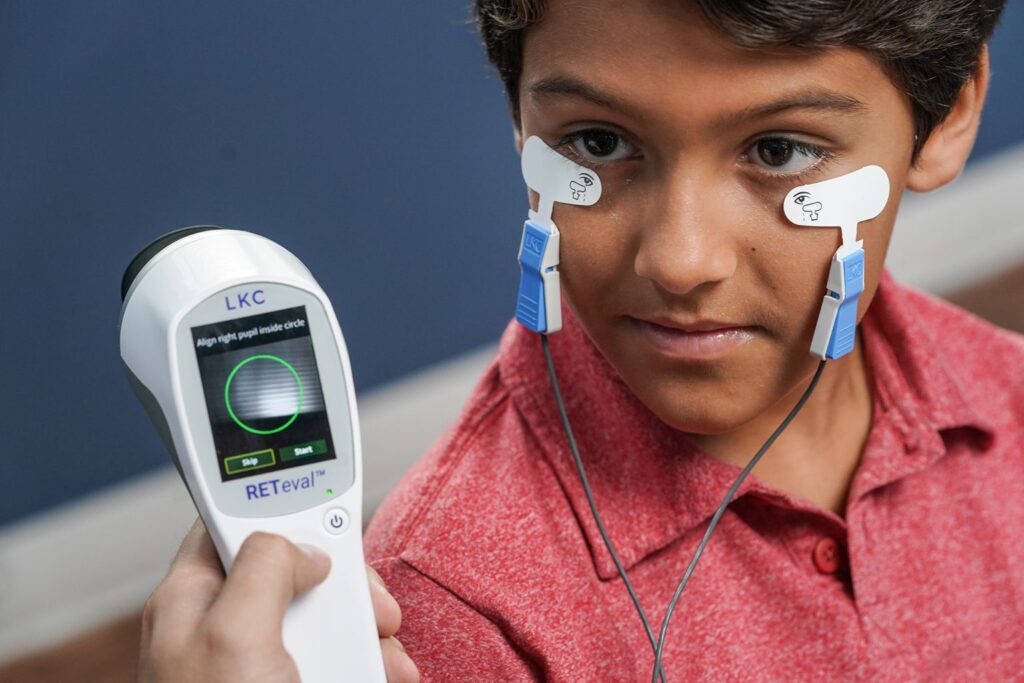Using Electroretinography to Demystify the Eye
What is Electroretinography?
Electroretinography (ERG) is a non-invasive test designed to measure the electrical responses generated by your retina when exposed to light. The retina, located at the back of your eye, is a crucial part of the visual system responsible for converting light into electrical signals that your brain interprets as vision.
ERG provides an objective and precise measurement of the electrical activity in different layers of your retina. This information helps us understand how well your retinal cells, including photoreceptors like rods and cones, are functioning.
Why Is This Important?
By assessing the electrical responses, ERG aids in the early detection and diagnosis of various retinal disorders. Detecting issues early allows for timely intervention, potentially slowing down the progression of the condition and preserving vision.
For those with progressive eye conditions, ERG enables us to monitor changes in retinal function over time. This allows us to tailor your treatment plan based on how your condition is evolving.

Informed patients are better equipped to actively participate in the decision-making process and adhere to prescribed treatments. Ask us how ERG could help you at your next visit!
